Top Tips for Shooting Jewelry on Models
Discover key photography tips to capture beautiful jewelry shots on models, highlighting both the pieces and their natural charm.
JEWELRY
6/30/20256 min read
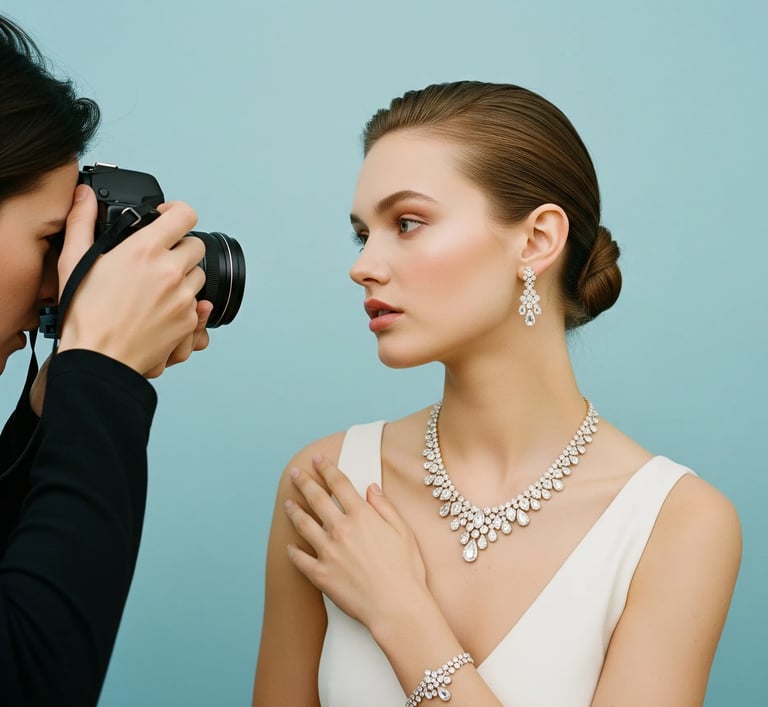

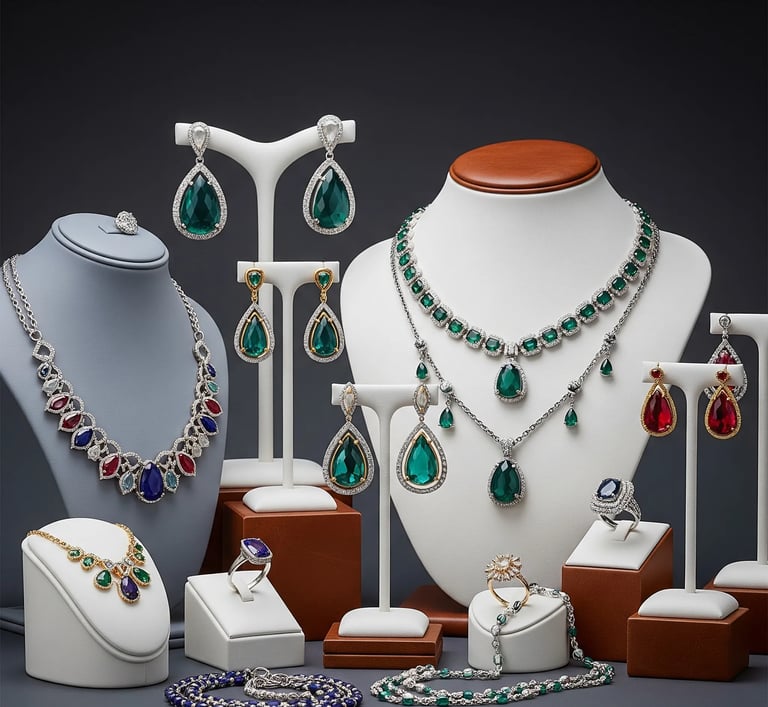

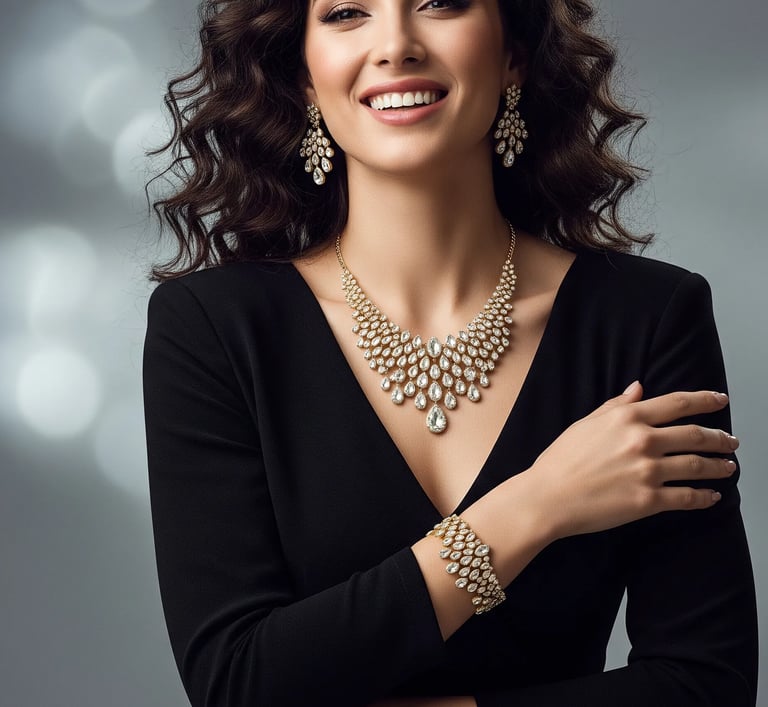

Jewelry photography on models requires both technical skills and creativity to showcase the jewelry and the model's beauty. In this blog we’ll show you how lighting, composition, and the model’s expression work together to create great photos. The right lighting, whether natural or artificial, helps highlight the shine and details of the jewelry. Using the right composition and angles ensures that the jewelry shines while improving the model's appearance and pose.
To take the true essence of jewelry, it’s important to focus on the connection between the model and the piece. A great photograph evokes feelings, even if it’s elegance, confidence, or joy, through the model's expressions and poses. With the right balance of lighting, composition, and emotional impact, photographers can elevate their jewelry shoots into memorable, storytelling images. These tips will help you create photos that showcase both the jewelry’s craftsmanship and the model’s beauty.
Choosing the Right Equipment
When it comes to capturing stunning jewelry photos on models, having the right equipment is key. A good camera is key, and both DSLRs and mirrorless cameras are great choices for their high image quality. These cameras allow you to change lenses and adjust settings, giving you more control over how your photos turn out. Along with the camera, choosing the right lens is crucial. Macro lenses, especially 100mm ones, are perfect for close-up jewelry, showing every detail clearly without distortion.
Lighting is another important element in jewelry photography. While natural light can work in some cases, using softboxes or ring lights provides more consistent and flattering results. These lighting tools help create soft, even light that reduces harsh shadows, allowing the jewelry to shine and show off its details. With the right equipment, you can take clear, detailed photos that highlight both the jewelry and the model’s beauty.
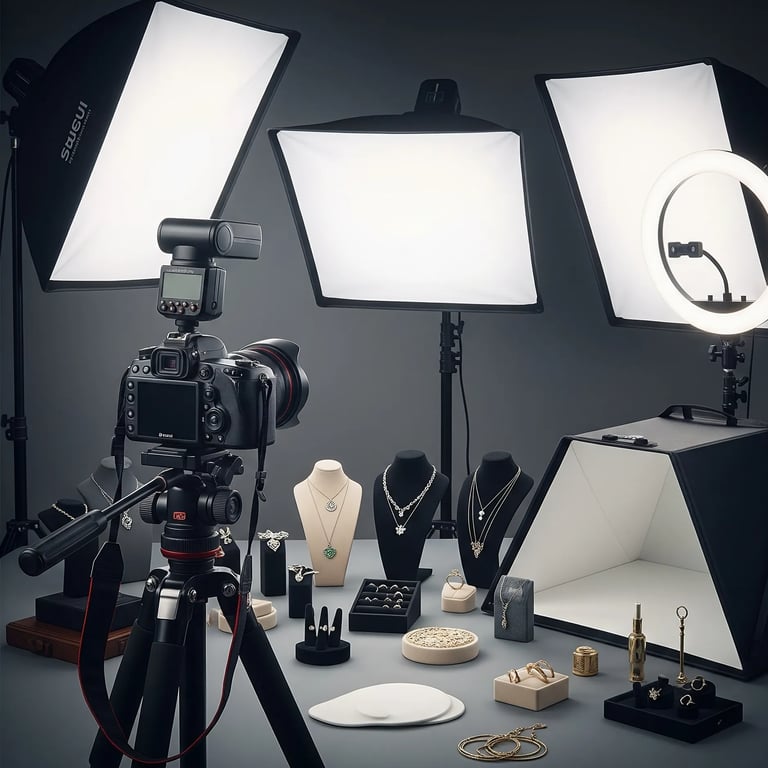

Lighting Techniques
Lighting is one of the most important factors in jewelry photography because it helps show off the fine details and sparkle of each piece. Natural light, especially during golden hour, provides a soft and warm glow that enhances the jewelry's beauty. Placing the model by a window or outside lets the sunlight gently light up the jewelry without being too harsh. Avoid direct sunlight, as it can create harsh shadows and overexposed spots that take attention away from the jewelry.
Artificial lighting also plays a big role in professional jewelry shots. Using softboxes or diffused LED lights can help create even lighting and reduce harsh shadows. Using multiple light sources helps balance the light and prevent reflections that could hide the jewelry’s shine. Adjusting the color temperature of the lights ensures the jewelry's true colors come through without looking too warm or cool. By controlling the light, photographers can highlight the jewelry's details and make it look its best.
Suggested Lighting Techniques:
Use natural light during golden hour for a soft, warm glow.
Position the model near a window or outdoors to capture soft sunlight, avoiding direct exposure.
Use softboxes or diffused LED lights to minimize harsh shadows and create even light.
Experiment with multiple light sources to balance the light and prevent reflections.
Adjust the color temperature of artificial lights to capture the true colors of the jewelry.
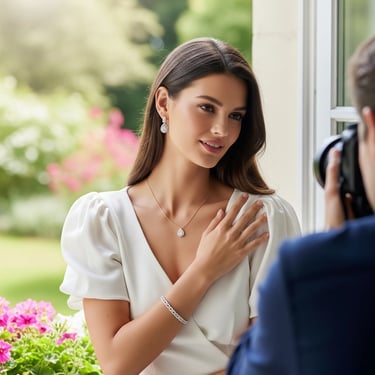

Working with Models
When photographing jewelry on models, finding the right balance between the model’s pose and the jewelry is key. Choosing the right angles can really highlight the details of the jewelry and make it the focal point of the image. An overhead shot works well for showing off a necklace, while side views are great for capturing the shine of earrings and rings. This helps the viewer appreciate the craftsmanship and design of the pieces more clearly.
Wardrobe choices also play a big role in how the jewelry is presented. Clothes should complement the jewelry without drawing attention away from it. Neutral colors are a good choice because they keep the focus on the jewelry, while bright patterns might distract from the details. Additionally, fabrics with a subtle sheen can reflect light, adding to the overall beauty of the shot. Encouraging natural, relaxed poses from the model helps make the jewelry feel more interactive.
Background and Composition
In jewelry photography, the background plays a huge role in highlighting the beauty of the pieces. Choosing the right background can either make the jewelry pop or cause it to get lost in the shot. Neutral colors like white and cream are perfect as they provide a simple background that doesn’t take attention away from the jewelry. For more colorful or detailed pieces, these soft backgrounds help keep the focus on the jewelry, letting its design and texture stand out. On the other hand, muted tones can enhance the brightness of the jewelry, making it appear even more striking.
Composition is just as important in showcasing jewelry effectively. A simple technique like the rule of thirds can help balance the image by placing the jewelry along points in the frame. This creates a more natural flow and guides the viewer’s eye toward the piece. Trying different angles can show the jewelry from various sides, highlighting its unique details and craftsmanship. By carefully considering both the background and composition, you can create images that truly highlight the jewelry’s beauty.
Post-Processing Techniques
Post-processing plays a key role in enhancing jewelry photos, especially when models are included. Software tools offer powerful options to fine-tune images and make sure the jewelry looks its best. One important technique is color correction, which ensures the jewelry’s colors appear true to life. Lighting can make colors look wrong, but adjusting the white balance and saturation can fix this and show the jewelry’s true colors.
Another important step in post-processing is removing any distractions from the image. Unwanted objects or clutter can distract from the jewelry, so removing them keeps the focus on the piece. This allows the jewelry to truly shine as the main subject of the photo. By adjusting colors and cleaning up the background, photographers can make jewelry photos look more polished and professional.
Recommended Software for Post-Processing:
Adobe Lightroom
Adobe Photoshop
Best Practices for Sharing and Promotion
In jewelry photography, presenting your work well is key to gaining attention and attracting clients. A strong portfolio is important, as it shows your skills and helps build your reputation as a photographer. When building your portfolio, pick images that showcase the jewelry’s beauty and your unique style. Consistent lighting, backgrounds, and presentation make your work look professional and highlight the quality of your photography.
Using digital platforms is another great way to promote your jewelry photography. Social media sites like Instagram and Pinterest are perfect for showcasing your photos and reaching a large audience. Websites like Behance and 500px also allow photographers to display their work to potential clients. To further increase your visibility, use engaging captions and relevant hashtags. Collaborating with jewelry designers and brands can boost your exposure. By featuring their work in your portfolio, you promote their brand and open doors for future referrals.
Best Practices for Promoting Jewelry Photography:
Create a well-curated portfolio that showcases your skills and unique style.
Ensure consistency in lighting, background, and presentation for a professional look.
Use social media platforms like Instagram and Pinterest to reach a wider audience.
Display your work on creative platforms like Behance and 500px for more exposure.
Engage your audience with captivating captions and relevant hashtags to improve visibility.
Collaborate with jewelry designers and brands to expand your reach and gain referrals.
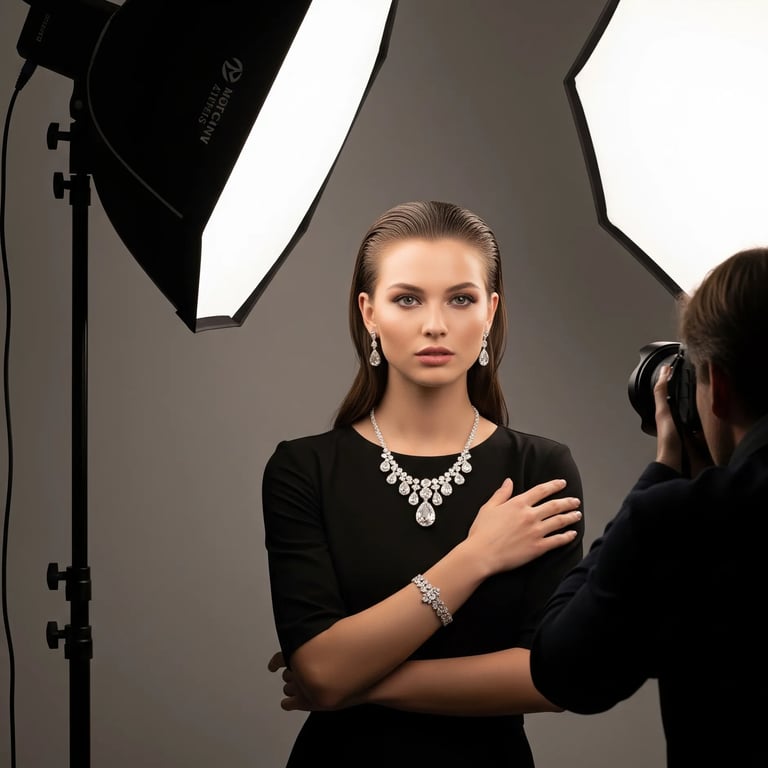

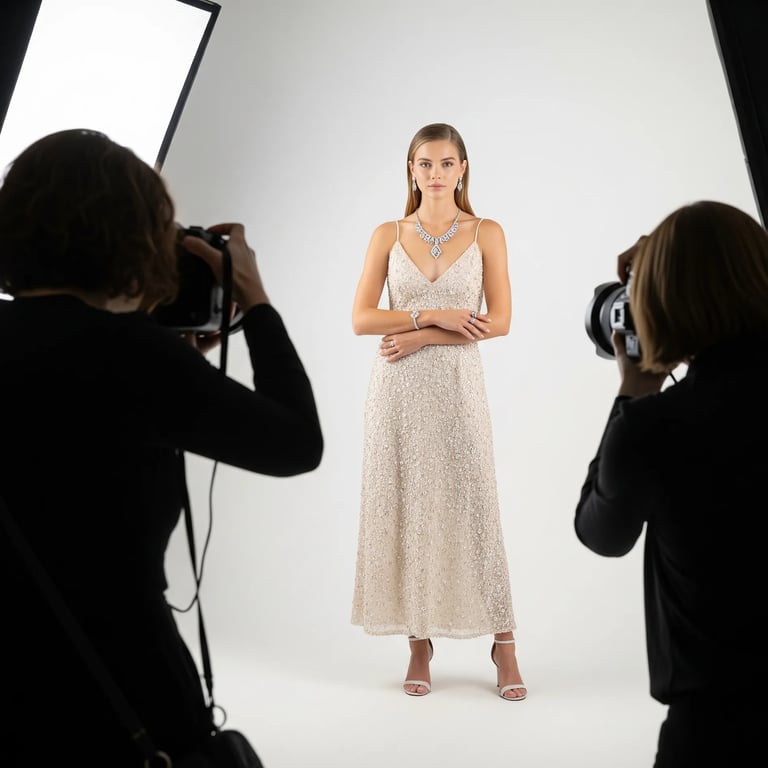

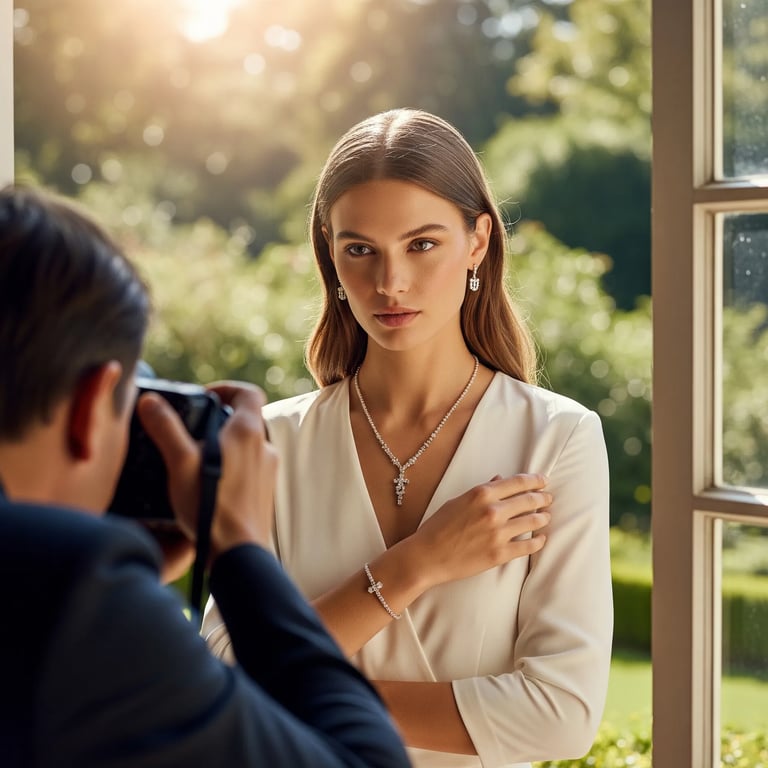

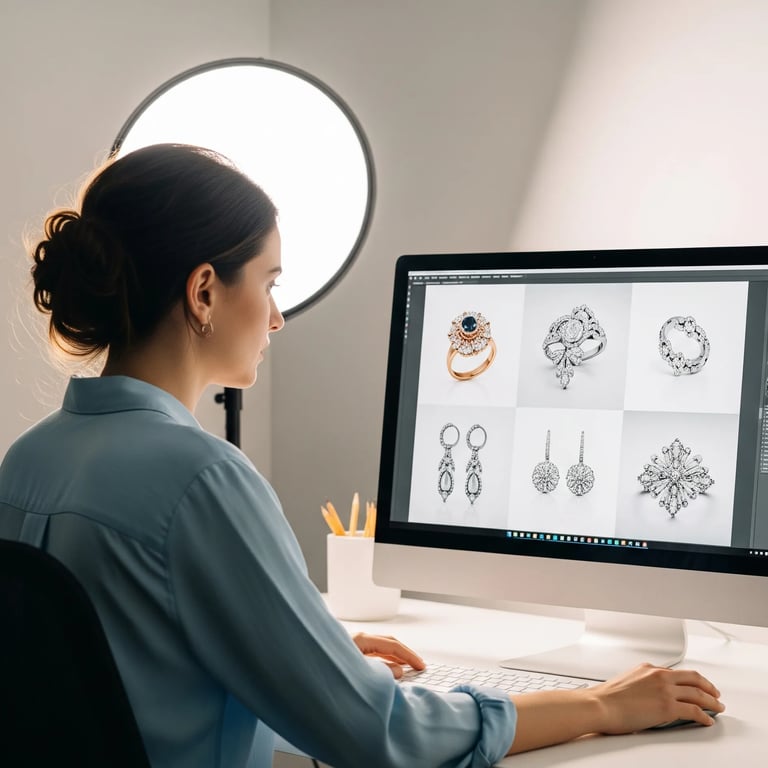

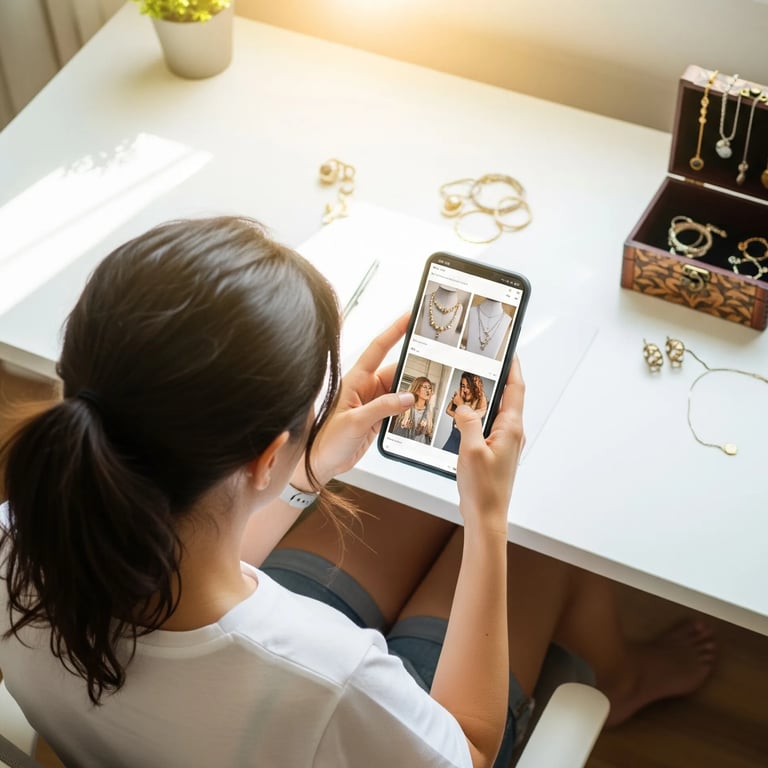

Jewelry photography is a blend of skill and creativity, capturing both the jewelry and the model's beauty. Using the right equipment, lighting, composition, and editing will help you create professional jewelry photos. These tips will help you take attractive photos of jewelry and models, even if it is for a portfolio or brand.
Remember, the magic of jewelry photography lies in your unique style and approach. Don't be afraid to experiment with different techniques to find what works best for you. We'd love to hear your thoughts and experiences. Feel free to share your tips or ask questions in the comments below; let’s keep the conversation going and learn together.
Follow
marketing@photostudioretoucher.com
+1 568-472-9510
Services
Sub Services We Offer

